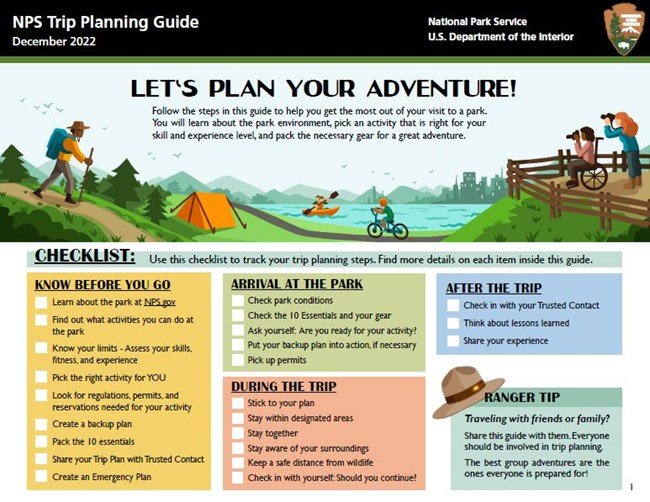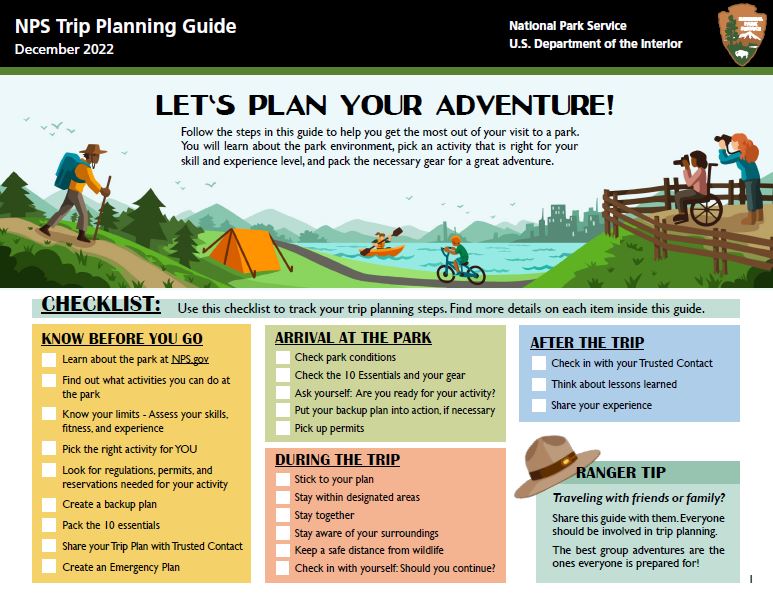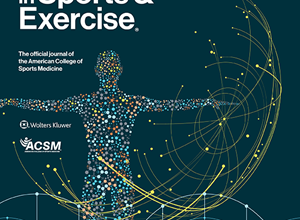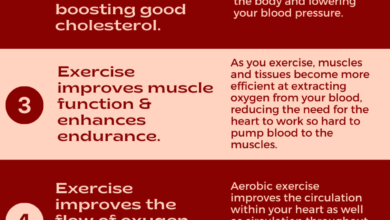
What is the 1st Thing to Consider When Planning to Exercise: Key Factors
The first thing to consider when planning to exercise is your health. Your current health status sets the foundation for safe and effective workouts.
Starting an exercise routine can be exciting. But before you jump in, knowing your health is crucial. Understanding your physical condition helps in choosing the right exercises. It prevents injuries and ensures that your fitness journey is safe. Consulting a doctor can provide insights into your health.
It can reveal any underlying conditions. Knowing this information helps in creating a tailored workout plan. This way, you can start your fitness journey on the right foot. A good start makes all the difference. So, your health should always come first.

Credit: www.nps.gov
Setting Clear Goals
Setting clear goals is crucial when planning to exercise. Goals give direction and purpose. They motivate and help track progress. Without clear goals, it’s easy to lose focus and give up. Let’s explore how to set effective goals.
Short-term Goals
Short-term goals are immediate targets. They are achievable within a few weeks. For example, aim to exercise three times a week. Or set a goal to walk 10,000 steps daily. These goals build momentum. They provide quick wins and keep you motivated. Make sure they are specific and measurable.
Long-term Goals
Long-term goals look at the bigger picture. They take months or even years to achieve. For instance, aim to run a marathon in a year. Or set a goal to lose 20 pounds in six months. These goals require commitment and consistency. They provide a sense of purpose. They help you stay focused on the journey.
Assessing Current Fitness Level
Before starting any exercise program, it’s important to assess your current fitness level. Knowing your fitness level helps create a tailored workout plan. It prevents injuries and ensures you get the best results. This assessment provides a baseline to track progress over time.
Fitness Tests
Fitness tests are essential to understand your physical capabilities. Simple tests can measure strength, flexibility, and endurance. For example, push-ups can test upper body strength. Sit-ups can measure core strength. A timed mile run or walk can gauge cardiovascular endurance. These tests give a clear picture of where you stand physically.
Health Assessments
Health assessments are equally important. They help identify any underlying health issues. This may include checking your blood pressure, cholesterol levels, and heart rate. A visit to your doctor can provide these assessments. Knowing your health status ensures you exercise safely. It also helps in setting realistic goals for your fitness journey.
Choosing The Right Exercise Type
Choosing the right exercise type is the first step to a successful fitness journey. Your choice will depend on your goals, preferences, and fitness level. It’s important to select exercises that you enjoy and that suit your physical condition. Let’s explore two popular exercise types: cardio workouts and strength training.
Cardio Workouts
Cardio workouts are excellent for improving heart health and burning calories. They include activities like running, cycling, and swimming. These exercises increase your heart rate and help improve cardiovascular endurance.
- Running: A simple and effective way to get fit.
- Cycling: Great for building leg strength and stamina.
- Swimming: Low-impact and works the whole body.
Cardio workouts can also be done indoors. Consider using a treadmill, stationary bike, or elliptical. Aim for at least 30 minutes of moderate-intensity cardio most days of the week.
Strength Training
Strength training is essential for building muscle and improving overall strength. This type of exercise includes weight lifting, resistance bands, and body-weight exercises. It helps increase muscle mass and boost metabolism.
- Weight Lifting: Use free weights or machines to build muscle.
- Resistance Bands: A flexible and portable option for strength training.
- Body-Weight Exercises: Examples include push-ups, squats, and lunges.
Strength training should be done two to three times per week. Focus on different muscle groups to avoid overuse injuries. Remember to start with lighter weights and gradually increase as you get stronger.
Creating A Balanced Routine
Creating a balanced routine is crucial when planning to exercise. A well-rounded workout plan ensures all areas of fitness are addressed. This approach helps prevent injuries and keeps you motivated. Focusing on different aspects of fitness can lead to better overall health.
Mixing Exercise Types
A balanced routine includes various exercise types. Strength training builds muscle and boosts metabolism. Cardio exercises improve heart health and endurance. Flexibility workouts, like yoga, enhance range of motion. Mixing these types keeps workouts interesting and effective.
Rest And Recovery
Rest and recovery are vital parts of any exercise routine. Muscles need time to repair and grow stronger. Overworking your body can lead to injuries. Schedule rest days to allow your body to heal. This ensures long-term success and fitness gains.
Understanding Personal Limitations
Planning to exercise is a great step toward better health. But it’s crucial to understand your personal limitations. Knowing what your body can handle helps you avoid injuries and setbacks. This involves recognizing both physical constraints and any medical conditions you may have.
Physical Constraints
Physical constraints are your body’s natural limits. These might include flexibility, strength, or endurance levels. For instance, if you have tight hamstrings, stretching exercises might be hard. Understanding these constraints helps you choose the right exercises. This will ensure a safe and effective workout.
- Assess your current fitness level
- Identify areas of weakness
- Set realistic goals
Medical Conditions
Medical conditions play a huge role in exercise planning. If you have a chronic illness, consult your doctor first. Conditions like asthma, diabetes, or heart disease can affect your workout choices. Your doctor can provide guidelines tailored to your health needs. This ensures you exercise safely and effectively.
| Condition | Considerations |
|---|---|
| Asthma | Avoid high-intensity workouts; focus on breathing exercises |
| Diabetes | Monitor blood sugar levels; prefer moderate-intensity activities |
| Heart Disease | Engage in low-impact exercises; avoid heavy lifting |
Understanding these limitations helps you create a balanced and safe exercise plan. It ensures you get the most out of your efforts without risking your health.
Establishing A Consistent Schedule
Before starting any exercise program, it’s crucial to establish a consistent schedule. A well-structured plan helps build discipline and ensures steady progress. Consistency is key to achieving your fitness goals. Without it, even the best exercise plan can fail.
Daily Routine
Incorporating exercise into your daily routine is important. Start by identifying the best time for you to work out. Some people prefer mornings, while others find evenings more suitable. Choose a time when you feel most energetic.
- Morning: Boosts your metabolism and energy levels.
- Afternoon: Breaks up the day and reduces stress.
- Evening: Helps unwind and improves sleep quality.
Once you have chosen a time, stick to it. Make it a habit, just like brushing your teeth. Consistency helps turn exercise into a natural part of your day.
Weekly Plan
A weekly plan provides a broader view of your exercise schedule. It ensures balance and variety in your workouts. A well-rounded plan includes different types of exercises.
| Day | Activity |
|---|---|
| Monday | Cardio |
| Tuesday | Strength Training |
| Wednesday | Rest or Light Activity |
| Thursday | Cardio |
| Friday | Strength Training |
| Saturday | Flexibility Exercises |
| Sunday | Rest or Light Activity |
Following a weekly plan ensures you are not overworking any muscle group. It also helps keep the routine interesting and prevents burnout. Adjust the plan as needed to fit your lifestyle.
Finding Motivation
Finding motivation is the first thing to consider when planning to exercise. Without motivation, sticking to a workout routine becomes challenging. Many people start with enthusiasm but lose interest quickly. To stay committed, it’s essential to find what drives you. This can be different for everyone. Some people are motivated by health benefits. Others by the desire to look and feel better.
Setting Milestones
Setting milestones can help you stay focused. Break your ultimate goal into smaller, achievable targets. For example, if your goal is to run a marathon, start with a 5K. Celebrate each milestone. This can give you a sense of accomplishment. It makes the larger goal seem less daunting. Small victories build confidence and keep you motivated.
Finding Support
Finding support is another crucial factor. Surround yourself with people who encourage you. This could be friends, family, or a workout buddy. Support systems provide accountability. You are more likely to stick to your plan if someone else is involved. Join a fitness class or an online community. These groups can offer motivation and advice. Sharing your progress with others can be very rewarding.

Credit: preppyandpink.com
Tracking Progress
Tracking progress is a crucial part of any exercise plan. It helps you stay motivated and see how far you’ve come. You can set goals, adjust your routines, and celebrate achievements. Let’s explore two effective ways to track your progress.
Using Fitness Apps
Fitness apps make tracking progress easy and fun. These apps offer features like step counters, workout logs, and progress charts. You can set goals and get reminders to stay on track. Many apps also have social features. You can share your progress with friends and stay motivated together.
Keeping A Journal
Writing in a journal is another great way to track your progress. Note down your workouts, how you felt, and any changes you noticed. This helps you see patterns and make improvements. A journal also allows you to reflect on your journey. It can be very motivating to look back and see how much you have achieved.

Credit: superspringsinternational.com
Frequently Asked Questions
What Is The First Thing To Consider Before Exercising?
The first thing to consider is your current fitness level. Assessing your fitness level helps you set realistic goals and avoid injuries.
Why Is Setting Exercise Goals Important?
Setting exercise goals is crucial as it provides direction and motivation. Clear goals help track progress and maintain focus.
How Can You Assess Your Fitness Level?
You can assess your fitness level by checking your endurance, strength, flexibility, and body composition. Consult a professional if needed.
Should You Consult A Doctor Before Starting Exercise?
Yes, consulting a doctor is recommended, especially if you have existing health conditions. It ensures your exercise plan is safe.
Conclusion
Starting an exercise routine requires thoughtful planning. Prioritize your health and safety. Consult a doctor if needed. Set realistic goals to stay motivated. Choose activities you enjoy. This keeps you consistent. Listen to your body. Rest when necessary. Gradually increase intensity to avoid injury.
Stay hydrated. Eat a balanced diet. Track your progress. Celebrate small victories. These steps ensure a successful exercise plan. Start today and enjoy the benefits.





